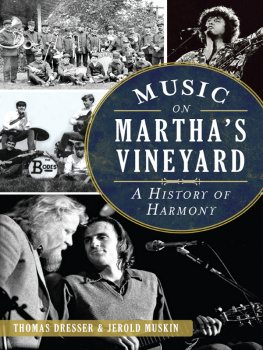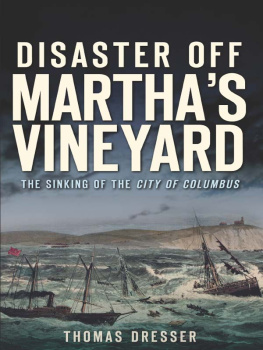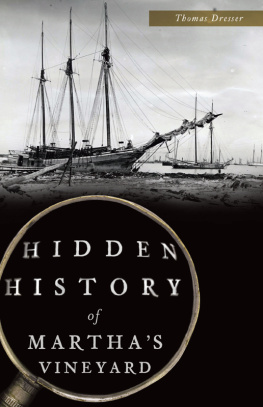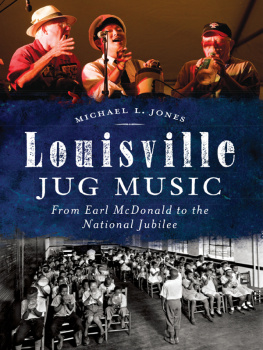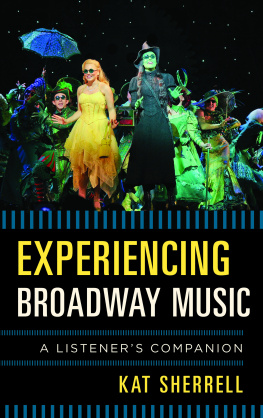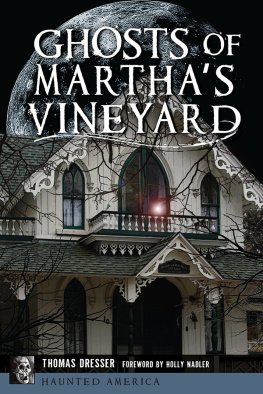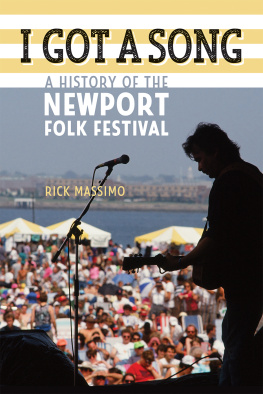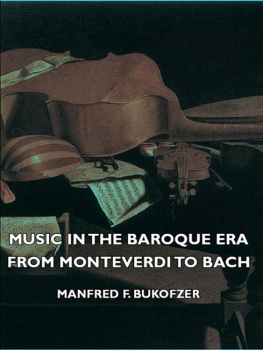

Published by The History Press
Charleston, SC 29403
www.historypress.net
Copyright 2014 by Thomas Dresser and Jerold Muskin
All rights reserved
Front cover, clockwise from top right: Arlo Guthrie, 1979, by Alison Shaw; Alex and James Taylor, 1988, by Peter Simon; The Bodes, 1966 (clockwise from top left: Jimmy White, Jack Mayhew, Charlie Leighton and Rick Convery), by Shirley Mayhew. Courtesy of Marthas Vineyard Magazine; Vineyard Haven Band, 1899. Courtesy of Chris Baer.
First published 2014
e-book edition 2014
ISBN 978.1.62585.156.7
Library of Congress Cataloging-in-Publication Data
Dresser, Tom, author.
Music on Marthas Vineyard : a history of harmony / Thomas Dresser and Jerry Muskin.
pages cm
Includes bibliographical references and index.
print edition ISBN 978-1-62619-623-0
1. Music--Massachusetts--Marthas Vineyard--History and criticism. I. Muskin, Jerry, author. II. Title.
ML200.7.M3D74 2014
780.974494--dc23
2014032504
Notice: The information in this book is true and complete to the best of our knowledge. It is offered without guarantee on the part of the authors or The History Press. The authors and The History Press disclaim all liability in connection with the use of this book.
All rights reserved. No part of this book may be reproduced or transmitted in any form whatsoever without prior written permission from the publisher except in the case of brief quotations embodied in critical articles and reviews.
CONTENTS
PREFACE
Dear Reader:
Tom and Jerry, your authors, took on this writing challenge to understand and then describe things musical as they have evolved on Marthas Vineyard over the decades. We also set out to look at the state of music on the contemporary scene, exploring and describing its antecedents. And acknowledging our predispositions, we explore the special nature of the Island that makes it so compelling to those who create music.
This small islands music was founded in the drumbeats and dances of its first occupants, the Wampanoags, and then from the worship of the devout Christian settlers. Drum and church music are still important elements in the Islands musical life. Early Islanders lived by farming and fishing and then, importantly, by going to sea as crew on whaling ships.
The Vineyard provided many of the whalemen who brought back a tradition of chanteys and sea songs meant to support the difficult work of whaling. Their music was the folk song of the era. To augment the whale ship crews, ships would put into Cape Verde or the Azores to recruit sailors; hence some Vineyard music has a Portuguese influence.
Vineyard whaling captains provided their wives and daughters with pianos. These then served as a basis for music-centered home entertainment and a social life of singing, with additional music offered by various instruments such as guitar, banjo and harmonica.
Church choirs were among the first organized singing groups, and now choral entities, church-related or otherwise, proliferate on the Island. Post Civil War, town bands created community-based entertainment; the prevailing influence of the Vineyard Haven Band is acknowledged. As the Island became a vacation and wedding destination, clubs and bars arose to meet those needs. Prominent among them was the Tivoli dance hall; later musicians performed at such venues as the Chilmark Tavern, the Boston House, the Hot Tin Roof, the Wintertide and the Atlantic Connection. Today, Flatbread, Dreamland, Alexs Place and the Atlantic take center stage, along with the Ritz, the Lampost, the Chilmark Community Center and Featherstones Musical Mondays.
Many homegrown musicians learned from their parents, teachers and peers. Some left the Island to find fame and fortune but maintained love and respect for the Vineyard. Many more musicians play and sing simply for the love of playing and singing, unconcerned with the larger audience. They find support from a community receptive to folk, jazz, rock, string and choral groups and even ukulele picking.
The Vineyards musical spectrum has extended itself to include world-class chamber music, popular rock groups and memorable dance bands. Some of the greatest names in music have associations with the Vineyard, including Leonard Bernstein, Beverly Sills and James Taylor.
Vineyard teachers provide buoyant musical support to the young. Some residents offer encouragement in funds and in kind. The local newspapers, the Vineyard Gazette and the Marthas Vineyard Times, deserve accolades for the supportive nature of their coverage of the music scene. Radio station WMVY, now back on the air, provides announcements and interviews regarding musical events.
Its hard to deny theres something special going on on Marthas Vineyard that makes it a musical mecca. Perhaps its in the mix of the salt water and the sand or the confluence of weather and ocean currents. Avian flyways alter air currents. Whether it is these factors or something else, there must be something special that makes Marthas Vineyard a magical, musical island.
Throughout our interviews, musicians have rhapsodized about the Island. From that array of encomiums, we can confirm that the Vineyard will be a magnet for joyous music makers far into the future, just as it has been in the past.
This is the poem that launched our effort:
Magical Musical Island
The day joins the calendar like a fine gauze obscuring the surrounding up-island woods, while rendering the seascape beyond into a murky blur.
Day meanders on, opaqueness gives way to translucence then to brilliant clarity.
Stone walls, tree canopied roadways, the roadside offerings of flowers and lowing cattle in the meadow all appear as dazzling epiphanies.
Thoroughbreds on the hill, bicyclists panting up hills and speeding down. Kids rushing to finish their castles before the tide sweeps them away. Kites riding on-shore breezes
These images, in their totality, in their singularity, magically transform one from the commonplace to the rapture of the here and now
And the waves pound onto the shore just as a timpani alerts the audience to the opening of a Beethoven opus. The new day is here! the pounding surf announces.
Are we to be embraced by a flute day or by a bassoon day? Will the day move on as a spiritual French horn passage or as the mournful drone of a cello?
At evening, will we hear Carlys voice or Jamess songs? Or Sousa creations at the Rockwellian band concert at Ocean Park? Circuit Avenue is sure to be alive to the pulsing beat of rock and roll.
On certain reverential nights Ravel, Mozart, or Brahms will be cascading from the open windows of the Old Whaling Church.
The Vineyard fairly bursts with the sounds of music. The Islands visual feasts are in harmony with the grandeur and pervasiveness of its music. It is as if one united with the other in a pact with angels.
The blessed culminations of this synergy is our magical, musical island.written by Jerry Muskin for the dedication of the fortieth anniversary of the Marthas Vineyard Chamber Music Society in 2010. This poem was published in Meanderings, a poetry book by Jerry Muskin.

The hills are alive with the sound of music. Nowhere is this statement truer than on the island of Marthas Vineyard, a small speck of land off Cape Cod. Sante Fe, Newport, Wolf Trap, Rockport and Tanglewood are centers of music, but they are time limited and site specific. When summer is over, most players from these musical enclaves return to their gigs, orchestral chairs or recording studios. New Orleans qualifies as a year-round locus of great music performed by unsurpassed musicians of their musical genreDixieland jazzbut it is essentially a singular style. On the Vineyard, the summer season of music lasts all year long, all over the Island, in churches, private homes, coffeehouses, clubs and prime music venues.
Next page
